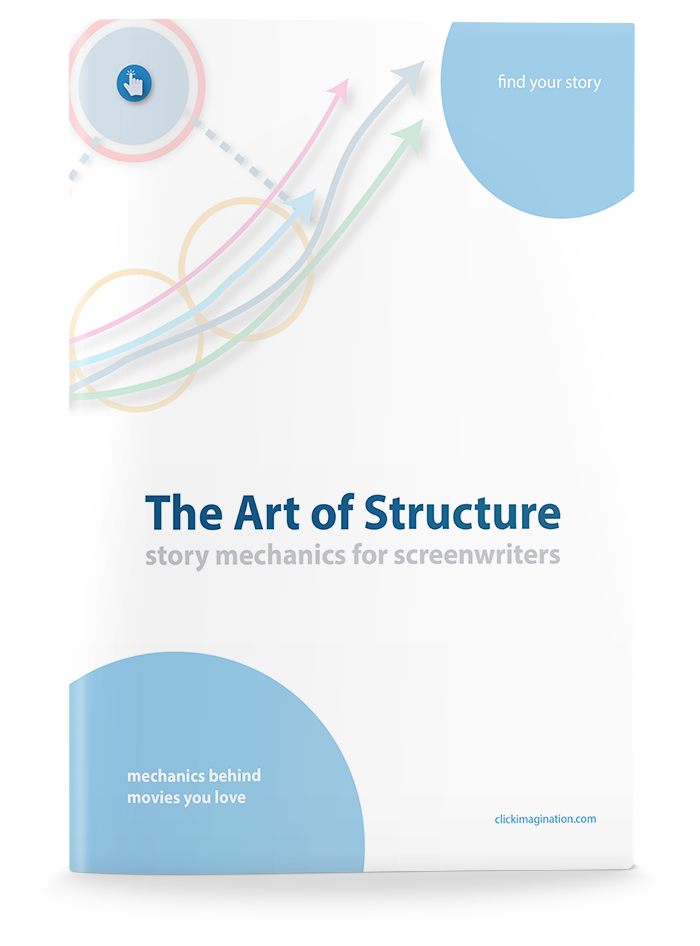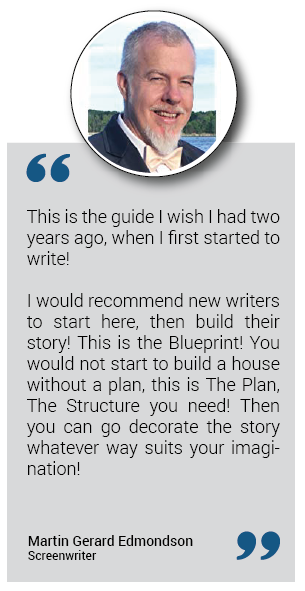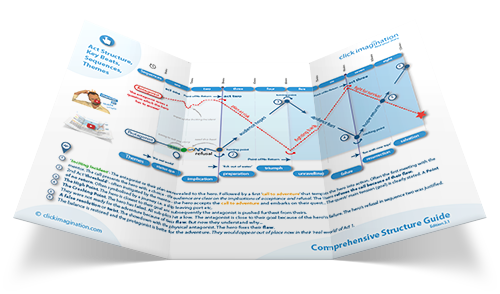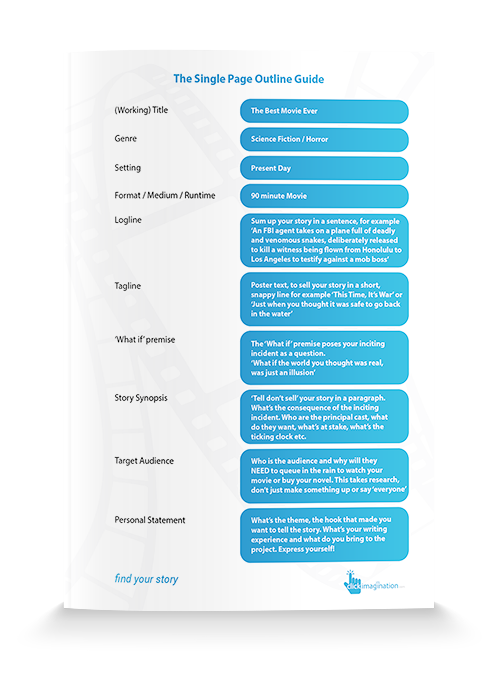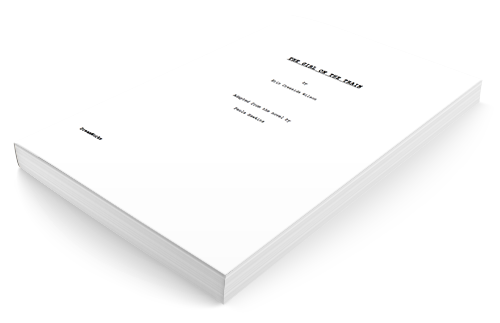Rather than writing a screenplay as one huge canvas, break it down into mini-movies
Let's face it there are many ways to write a screenplay and chances are you can probably get a few drafts along with something that reads pretty great until... you hit that wall. It's hard to put your finger on but something isn't working. Everyone who reads it feels the same and no amount of rewrites and polishes seems to fix it.
Writers tend to use plot to get a script out of trouble but, instead of helping, it just muddies the water.
There can be many reasons that a screenplay falters but the most common, by a country mile, is a lack of clarity. 'Plot' is hiding the story and not allowing readers to emotionally connect. Unless the story is broken-down into its component parts and looked at from scratch, it will only get worse with every successive redraft. Look at it this way, exceptional vision and talent has delivered a screenplay that's 90% brilliant but if the problems are obvious on paper, imagine how huge they will look on the big screen. Writing a screenplay is all about rewrites and it's important to understand the mechanics behind the craft.
Sequences effectively break a story down into manageable blocks. Each block is like a mini-movie in its own right - complete with a beginning, middle and end. There are eight sequences in a screenplay and, although they vary in length depending on the movie runtime, they will typically be 12 to 15 minutes. There are two sequences in the first act, four in the second act and two in the third act. Each sequence has a defined purpose in relation to advancing the story. Each one sets up the next and the hero is only able to pass through into the proceeding sequence once the main tension of the current sequence is resolved. In this post we're going to cover the mechanics of sequences and the interrelationships of the antagonist and protagonist. To try and simplify things we will go deeper into the themes of each sequence in another post.
The origins of sequences lay in the golden age of cinema when theatres had to change the projector's film cans every 12 minutes. Having a complete story in one can, with a hook to keep the audience in their seats, meant that cinema goers would wait for the next can to be loaded. This has become the 'Hollywood Model' and can be seen in most mainstream movies today.
In the structure chart below, we see the protagonist's (hero’s) journey plotted against that of the antagonist. This is really important as it demonstrates the hero and villain are opposites in the story. With the two lines plotted together you should get a sense that something the hero does effects the villain and vice-versa. This is reflected in the tone of the sequences with the audience feeling 'hope' in sequences 3 & 4 and then 'fear' in 5 & 6.
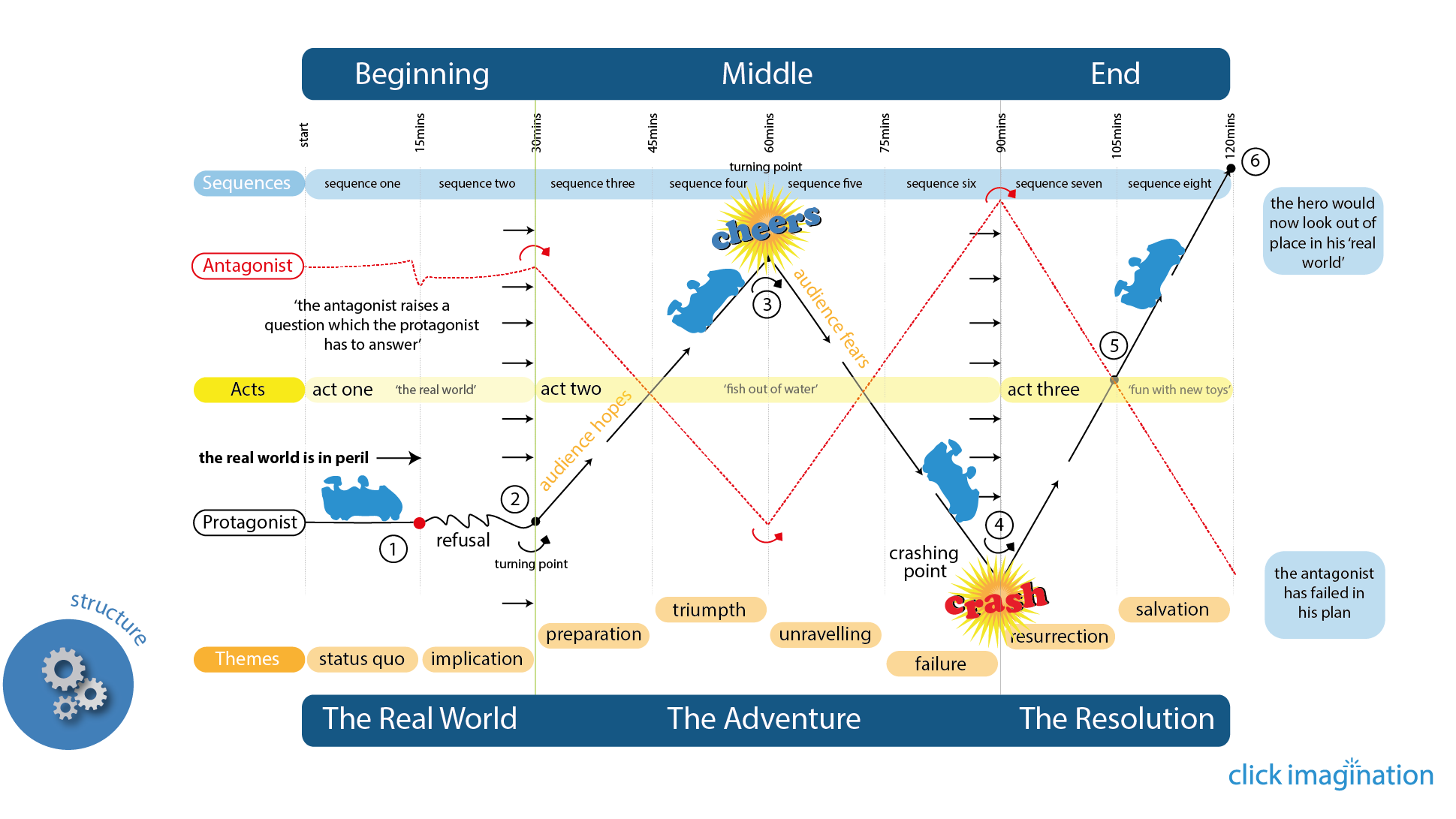
For help with writing a screenplay, download this structure guide here
So let’s look in more depth at the purpose of each of these sequences and get an understanding of how they are used to fill in the spaces between the key story beats.
Sequence 1
Sequence 1 is the 'Status Quo' - this is where we see the hero in their everyday life and establish their ‘weakness' or 'flaw’. We also see the antagonist developing their plan to put the world in jeopardy. The inciting incident (often referred to as the call to adventure) is the moment that the antagonist's plan, or threat of it, is revealed to the hero. It’s often accompanied by a direct question of the hero - ‘will you save the world’ etc.
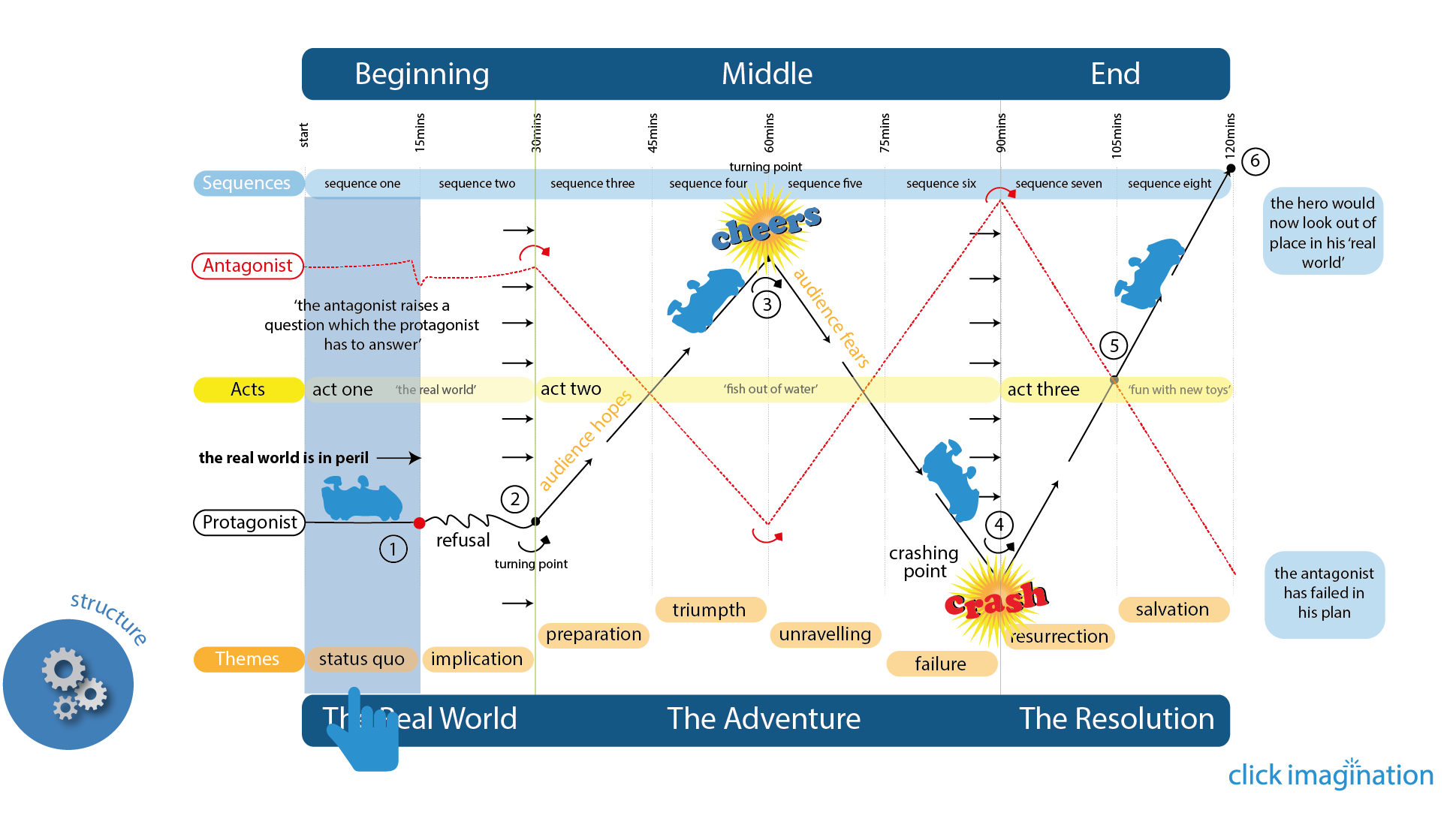
Sequence 2
Sequence 2 is about the 'Implication' of the antagonist's question on the hero. The hero refuses the question (refusing the call to adventure) based on their weakness or flaw. Refusal is hugely important because it plants a seed in the audience's mind that the hero could actually fail.
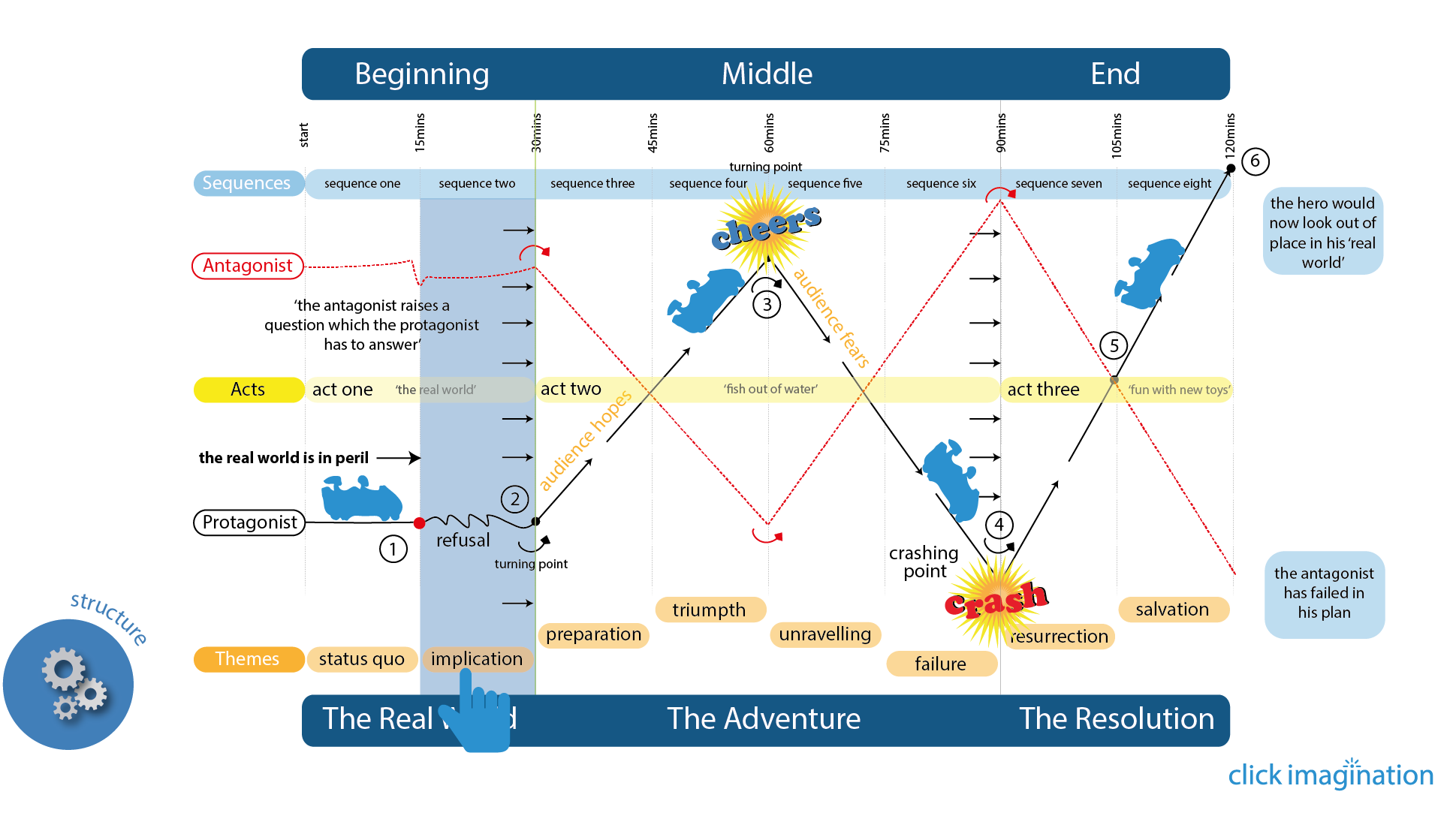
Sequence 3
Sequence 3 is about 'Preparation' - The hero is assembling the team, talking through the plan, getting the weapons etc. This is usually led by the mentor figure (the central character) who is the hero's guide through the 'adventure'. Often the central character looks like a fish out of water in Act 1 but are in their element in the proceeding acts. This is Gandalf in Lord of the Rings. In Sequence 3, the hero is preparing for the mission. The audience is filled with a hope of success. Again, in Lord of the Rings this is Frodo meeting his companions at Rivendell, agreeing the plan, getting the sword etc.
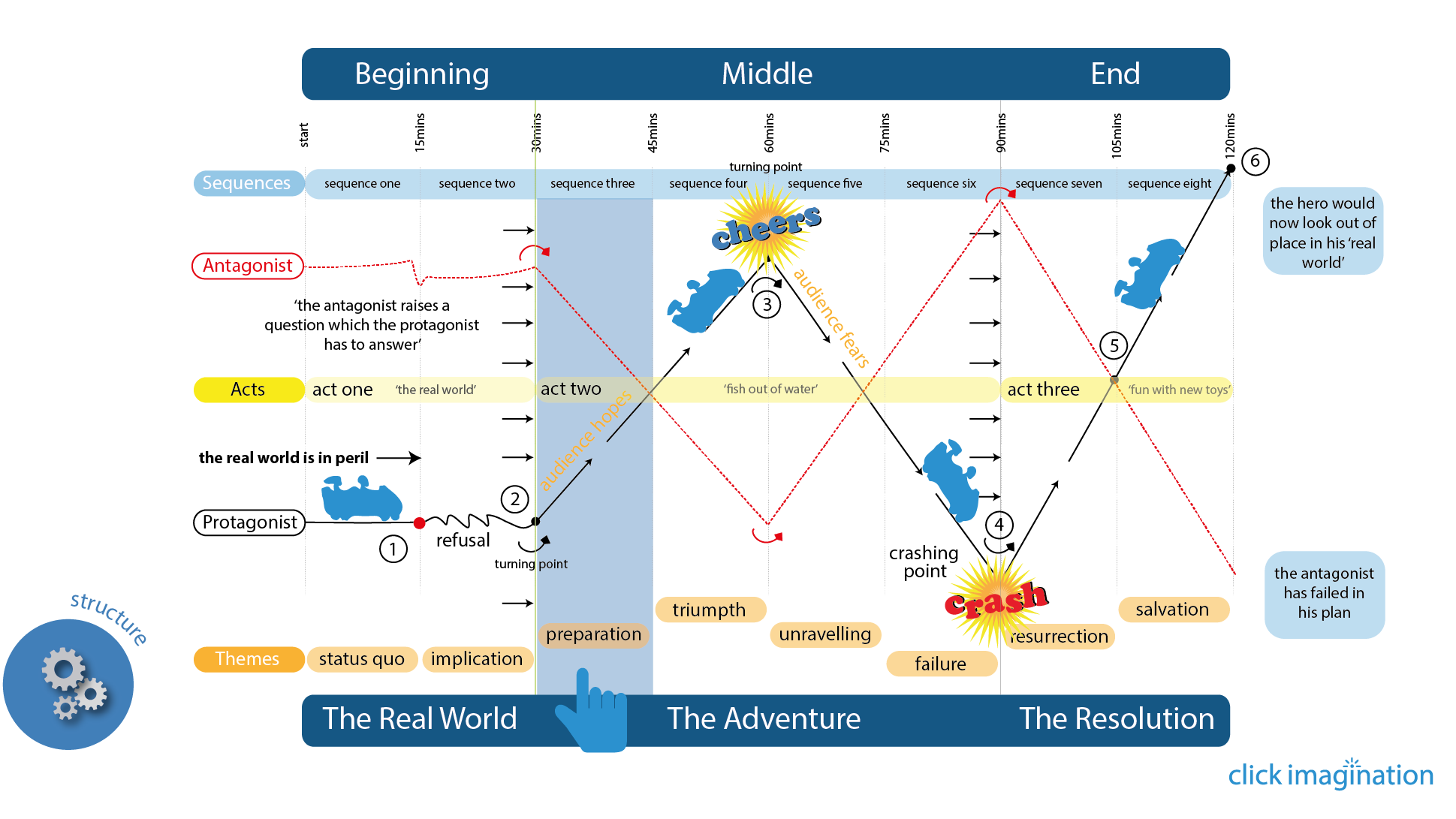
Sequence 4
Sequence 4 is 'the first triumph' - this is the first time the hero is really tested against the antagonist’s army. Because the hero is shielded by the ‘team’, however, his weakness or flaw is not an issue.
Just looking at the protagonist’s line again - we can see that all this rising action from the hero in Sequence 4 has meant that the antagonist’s action line has fallen as a result. This next turning point, Story Beat 3, is where the antagonist turns the tables and comes back with a vengeance. In the case of The Matrix, this is where the Agent convinces Regan to sell out his shipmates and the proceeding sequence is about how they are all killed.
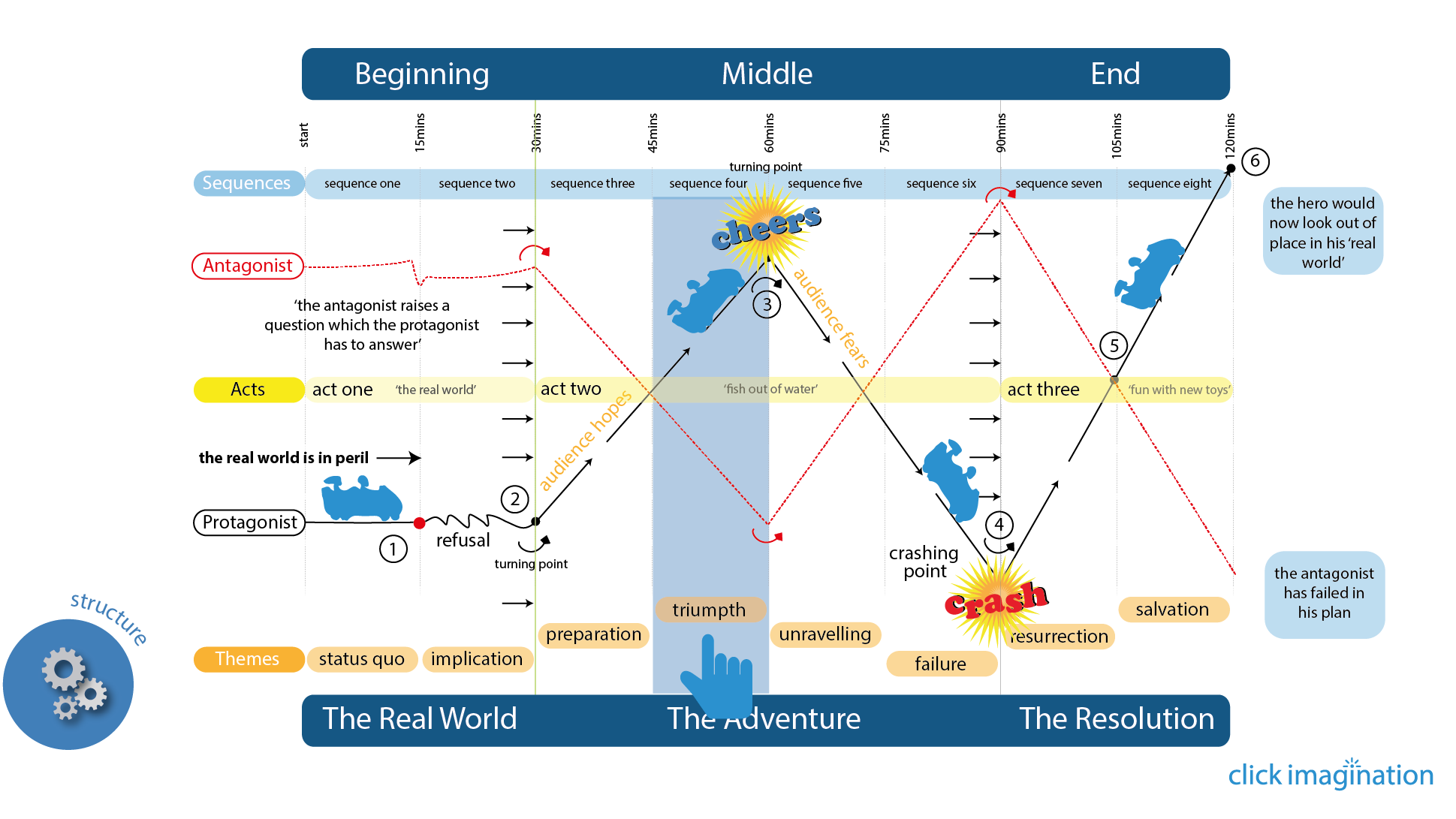
Sequence 5
Sequence 5 is about the hero’s plan 'Unravelling' - the audience ‘fears’ for the mission. Everything that was built to support the hero in Sequence 3 is being torn away. The assembled team is either getting killed off or turning against each other. The hero’s flaw or weakness is now apparent and obvious both to the audience and the team. Note that the antagonist's action line is rising which is causing the hero's to fall as a result.
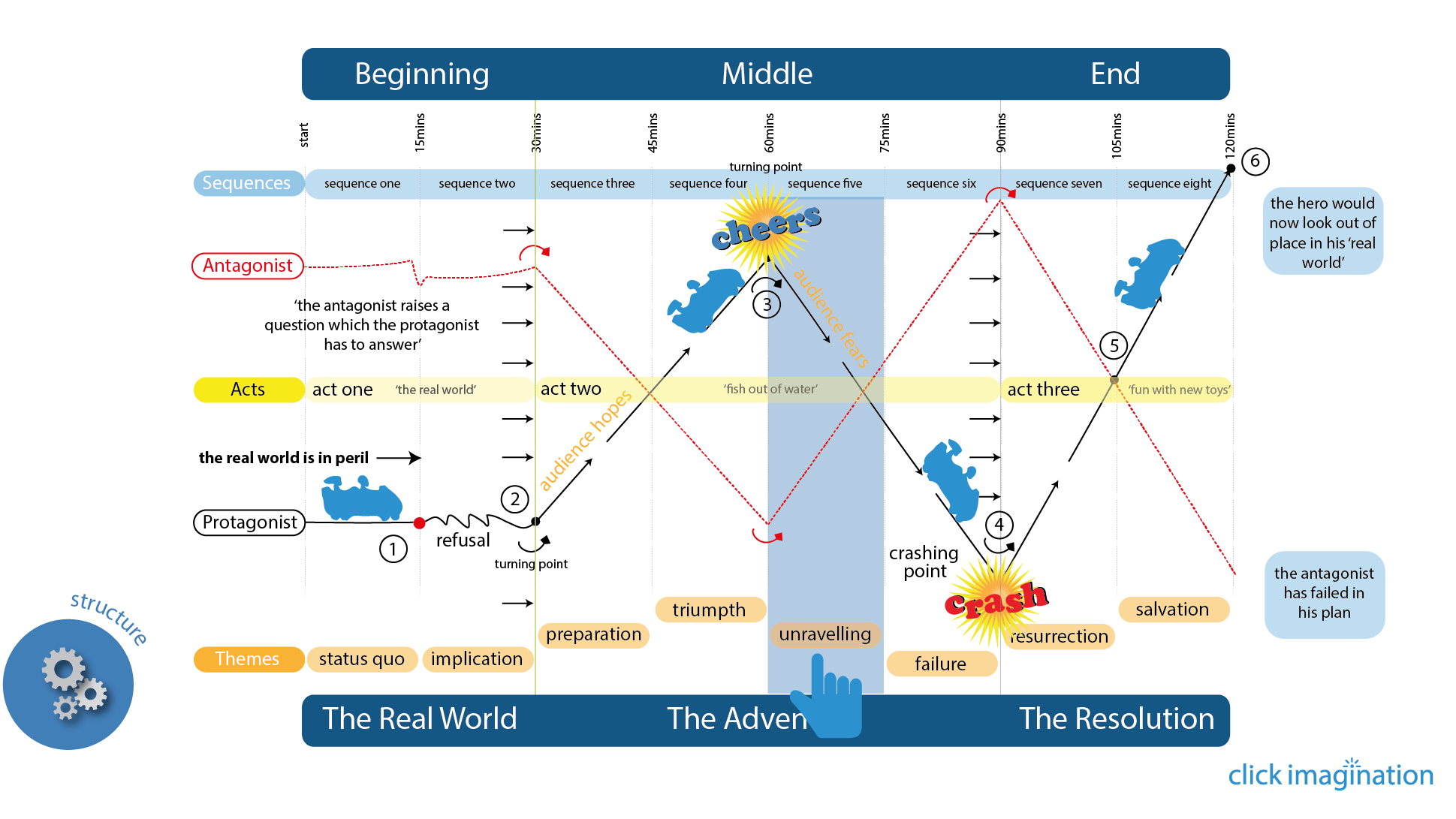
Sequence 6
Sequence 6 is about 'Failure' - The hero’s plan is in tatters. The antagonist is closer than ever to achieving their objective. In Gladiator this is where Maximus is betrayed and Quintus and Proximo are killed. Comadus adopts Lucius and threatens his sister to provide a ‘true heir’. All sub-plots spiral to their lowest point in this sequence. The audience fears all hope is lost.
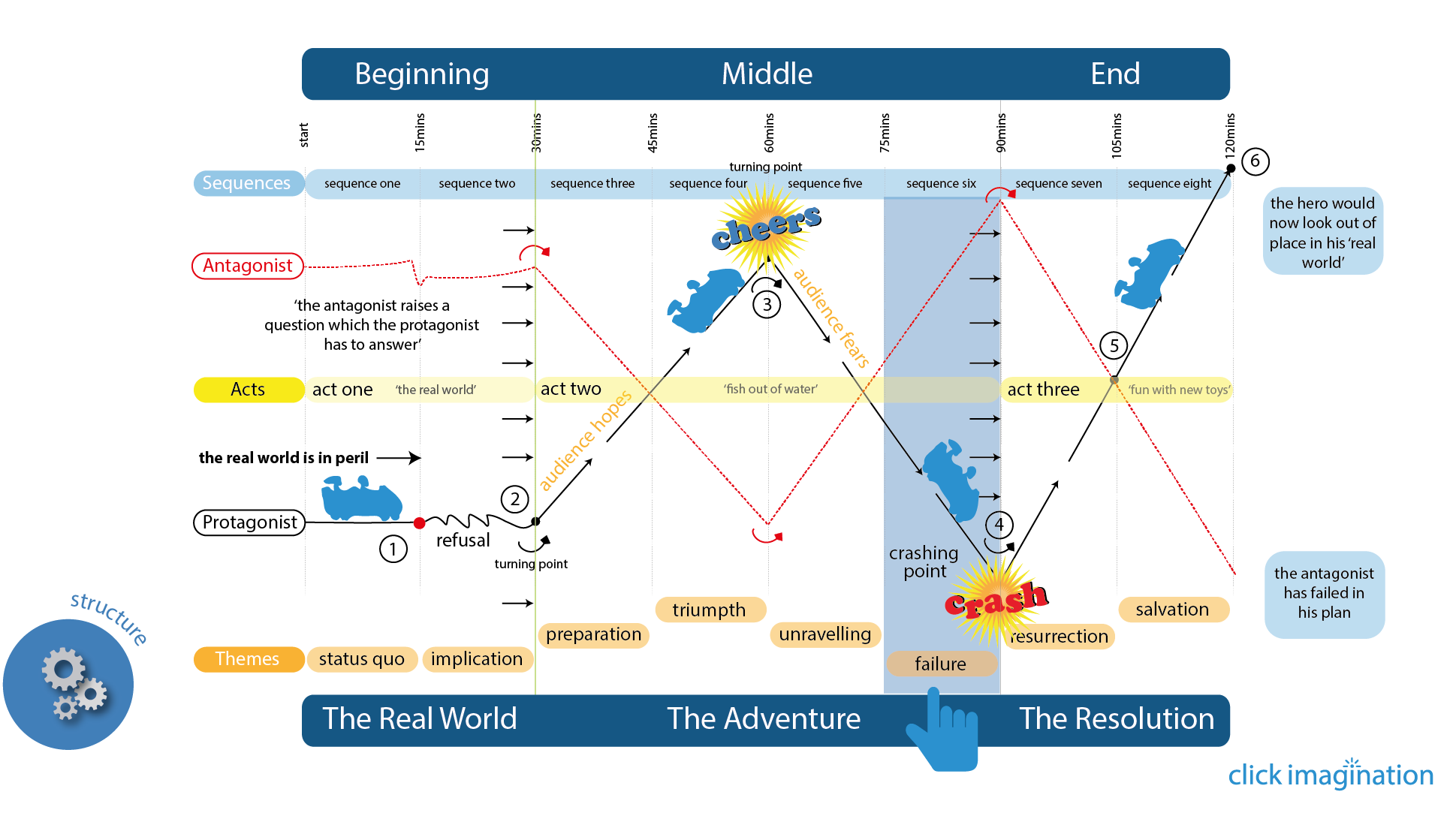
Sequence 7
Sequence 7 is about 'Resurrection' - The hero finds the strength to fight back and there is a showdown with the antagonist. We think the story ends here. In horror it’s often the point where we believe the monster is dead - but they miraculously come back to life. In structural terms this sequence has two purposes 1) to provide a false resolution or 2) a twist in the story that alters the perception of events leading up to that point.
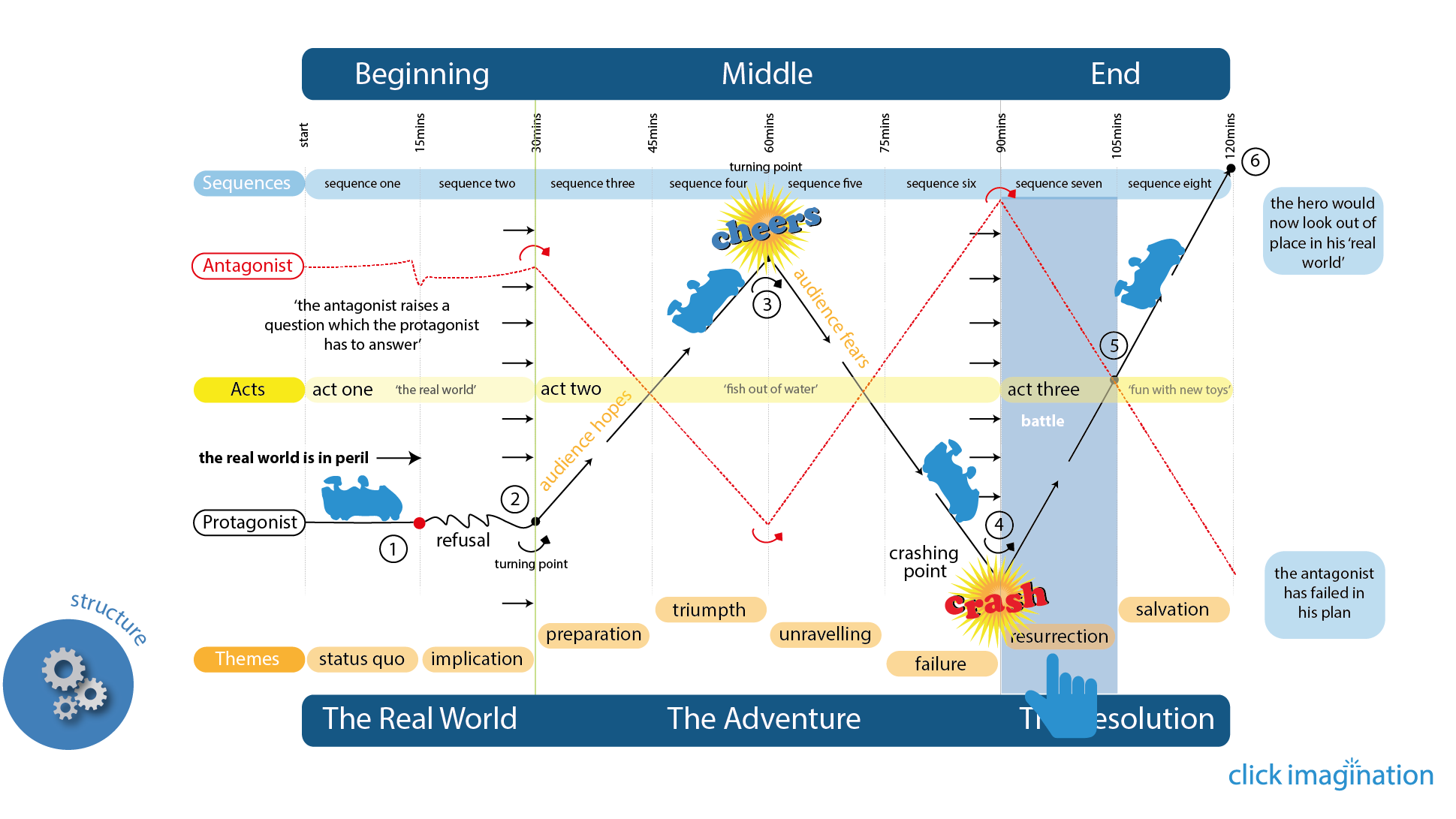
Sequence 8
Finally, Sequence 8 is about 'Salvation' - the hero realises their weakness or flaw and become a changed person. They are able to use this new strength to finally defeat the antagonist or save themselves. The Act 3 ‘Resolution’ is about the hero overcoming their own personal demons. This is what creates a happy, satisfying ending.
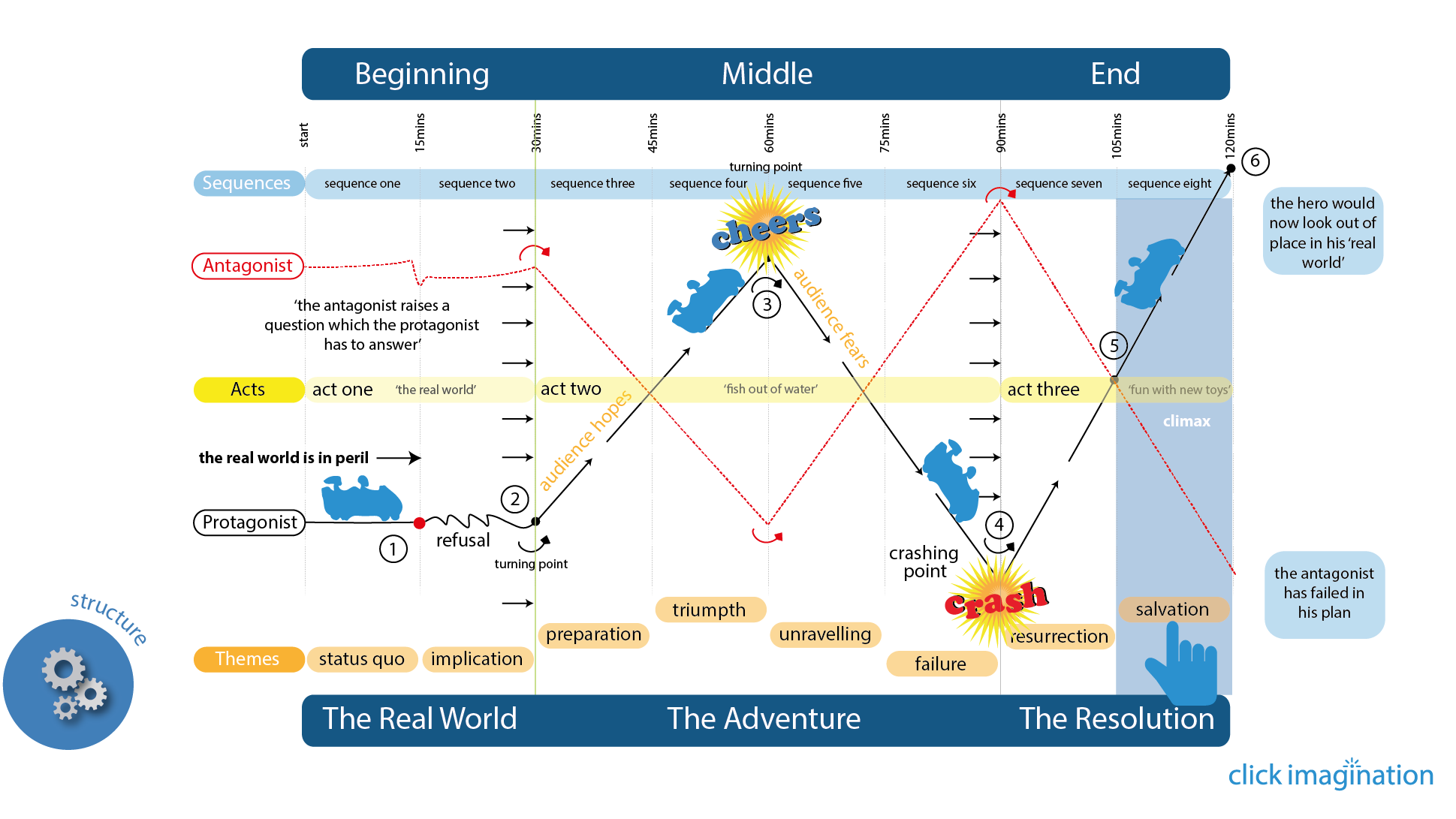
Check out the Structure Chart and Worksheet that accompanies this blog.

